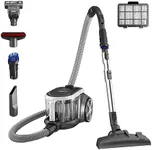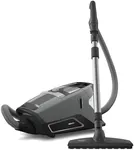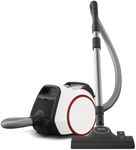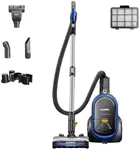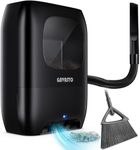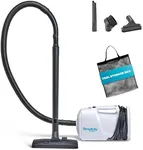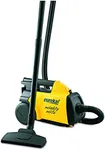Buying Guide for the Best Bagless Cylinder Vacuum Cleaners
Choosing the right bagless cylinder vacuum cleaner can make a significant difference in how effectively and efficiently you clean your home. Bagless cylinder vacuum cleaners are popular because they eliminate the need for replacement bags, making them more convenient and cost-effective in the long run. When selecting a vacuum cleaner, it's important to consider several key specifications to ensure you get the best fit for your needs. Here are the key specs to look out for and how to navigate them.Suction PowerSuction power is a measure of how effectively the vacuum can pick up dirt and debris. It is usually measured in watts (W) or air watts (AW). Higher suction power means better cleaning performance, especially on carpets and rugs. For homes with mostly hard floors, a lower suction power may suffice, while homes with thick carpets or pets may require higher suction power to ensure thorough cleaning.
Dust CapacityDust capacity refers to the amount of dirt and debris the vacuum can hold before it needs to be emptied. This is typically measured in liters. A larger dust capacity means you can clean for longer periods without needing to empty the container, which is convenient for larger homes or extensive cleaning sessions. For smaller homes or less frequent cleaning, a smaller dust capacity may be adequate.
Filtration SystemThe filtration system is crucial for trapping dust, allergens, and other particles, ensuring that the air expelled by the vacuum is clean. HEPA filters are highly effective and can capture up to 99.97% of particles, making them ideal for allergy sufferers. Other types of filters may be less effective but can still provide good filtration for general use. Consider your sensitivity to dust and allergens when choosing the filtration system.
Weight and ManeuverabilityWeight and maneuverability determine how easy it is to move the vacuum around your home. Lighter vacuums are easier to carry up and down stairs and maneuver around furniture. If you have a multi-story home or limited strength, a lighter vacuum will be more convenient. However, heavier models may offer more stability and durability.
Noise LevelNoise level is an important consideration if you are sensitive to loud sounds or if you have young children or pets. Noise levels are measured in decibels (dB). Quieter vacuums typically operate at around 60-70 dB, while louder models can exceed 80 dB. Choose a vacuum with a noise level that you find comfortable for your living environment.
Attachments and AccessoriesAttachments and accessories enhance the versatility of your vacuum cleaner. Common attachments include crevice tools, upholstery brushes, and pet hair tools. These can help you clean different surfaces and hard-to-reach areas more effectively. Consider the types of surfaces and areas you need to clean and choose a vacuum with the appropriate attachments.
Cord Length and Hose ReachCord length and hose reach determine how far you can move the vacuum without needing to switch power outlets. A longer cord and hose provide greater flexibility and convenience, especially in larger rooms or homes. If you have large spaces to clean, look for a vacuum with a longer cord and hose to minimize interruptions.
Ease of EmptyingEase of emptying refers to how simple and mess-free it is to empty the dust container. Some vacuums have one-touch emptying mechanisms that make the process quick and hygienic. If you prefer minimal contact with dust and debris, look for a vacuum with an easy-to-empty design.
